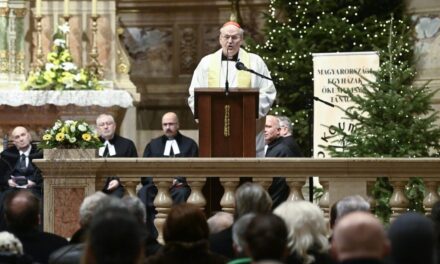The Unitarian church in Nyárádgálfalvi, located in the Skanzen Transylvania building complex, was consecrated on Saturday as part of a solemn service.
The ceremony was celebrated by István Kovács, the bishop of the Hungarian Unitarian Church, according to Skanzen's announcement sent to MTI.
As they write, the museum and the Hungarian Unitarian Church have entered into an agreement for the further use of the church.
The Nyárádgálfalvi church of the Skanzen can also serve as a venue for the ceremonies of the Unitarian community. Before Saturday's ceremony, Eszter Vitályos, Parliamentary State Secretary of the Ministry of Culture and Innovation, Miklós Cseri, General Director of the Skanzen, Elekes Botond, General Curator of the Hungarian Unitarian Church District, Levente Fazekas Lajos, Dean of the Hungarian Unitarian Church Circle and Gergely Prőhle, Evangelical Church of Hungary national supervisor.
It was recalled: the first exhibition unit of the Skanzen Transylvania building complex was handed over in May, the central sacred building of which is a Unitarian church from Nyárádgálfalva, Maros County, Romania.
The exhibitions of the Open-Air Museum of Ethnography have been home to the buildings of various denominations. There are also Roman Catholic, Greek Catholic and Reformed churches in the Skanzen, in which services, baptisms and weddings can be held.
The Skanzen chose a Unitarian church as the central sacred building of the Transylvanian complex, as the Unitarian religion has a special role in the history of Transylvania: the only Hungarian-founded religion was born in Transylvania in the 16th century. Today, 70,000 people in Transylvania and Hungary claim to be Unitarian.
The Nyárádgálfalvi Unitarian church was built in 1757 at the expense of landowner Zsigmond Szentiványi. Since the building was built without royal permission during the Counter-Reformation, it was closed by Mária Theresia, and it was only allowed to open in 1772. Its furnishings were then completed, the year 1773 is preserved on the eastern gallery, the coffered ceiling and the crown of the pulpit. The church square shows the puritanical simplicity of Unitarian church furnishings, the already mentioned pulpit crown can be admired in addition to the pulpit and its table.
An exhibition on the stone fence of the church of the Skanzen Transylvania building complex introduces visitors to the Unitarian religion and its history. In the interior of the church, the museum presents reminders of the village planning plan of Romania before the regime change, the destruction of the village.
They emphasize that sacred buildings are central places for the community's religious practice, but they also play an important role in maintaining national identity as a minority.
As a symbol of being a minority, a 95x173 centimeter national flag, donated to the Skanzen by the Unitarian community of Nyárádgálfalv, can be seen in the Skanzen's church in Nyárádgálfalv. The flag was attached to the carts of enlisted soldiers. It had to be hidden after 1945, and was found in 1989 from the depths of the organ.
Source: MH
Cover photo: MTI, Zoltán Máthé













